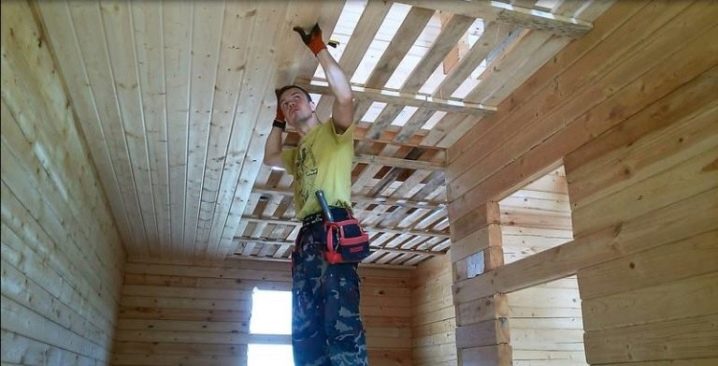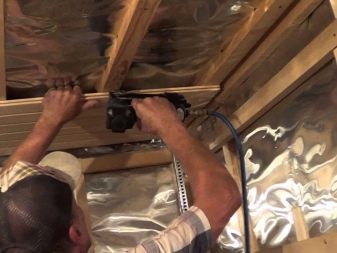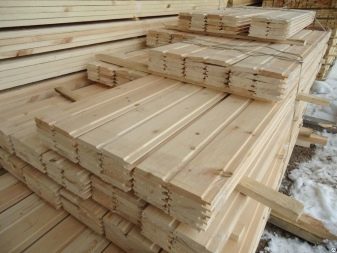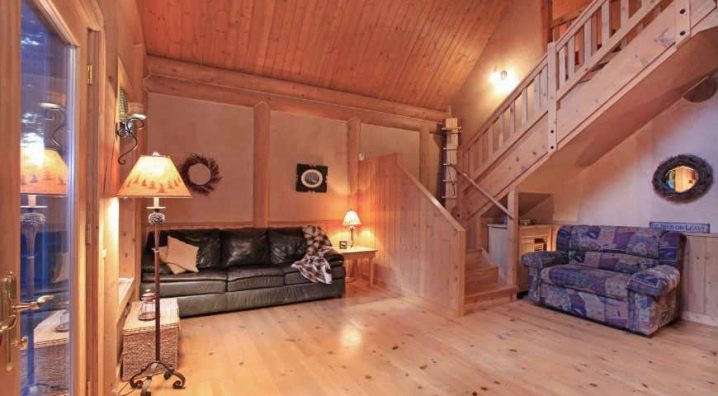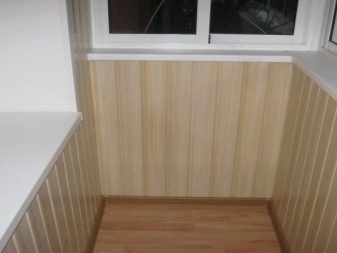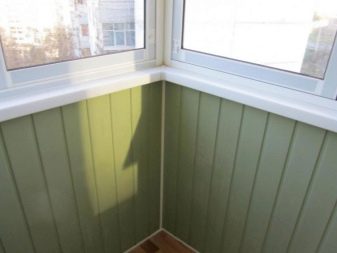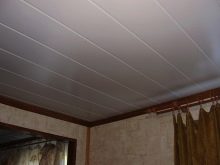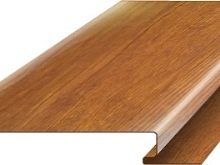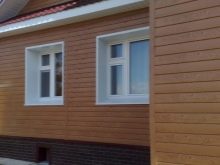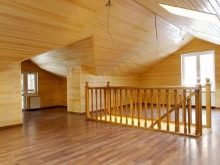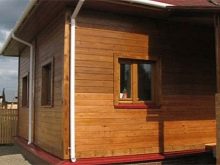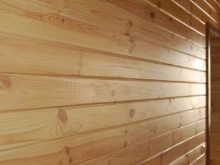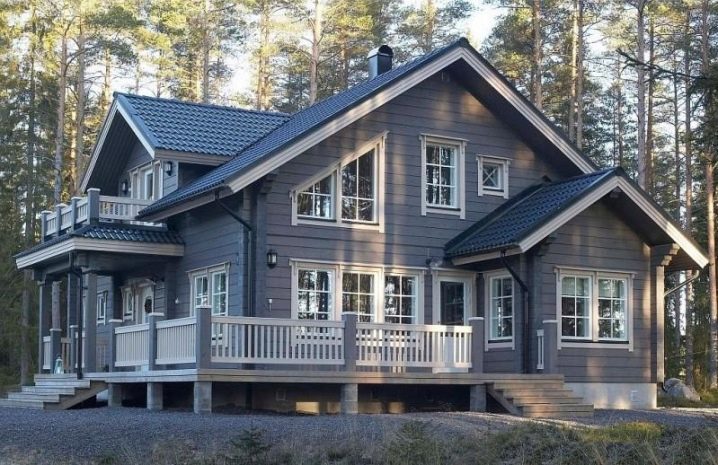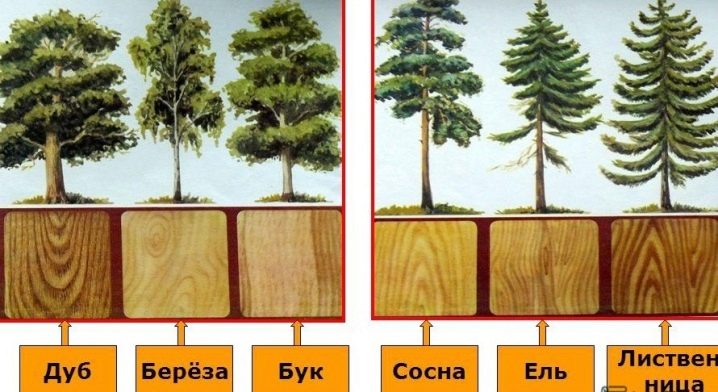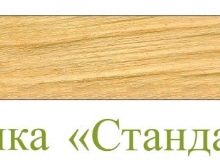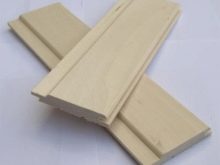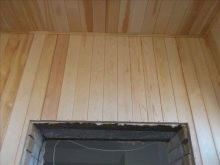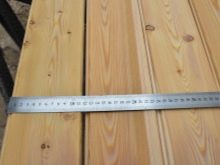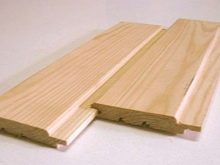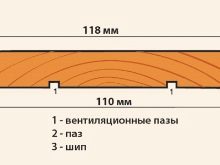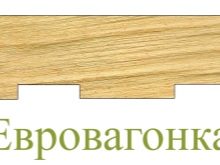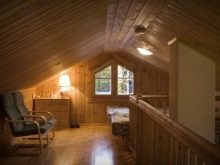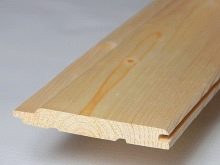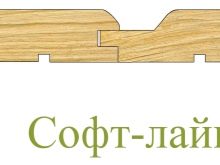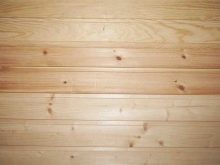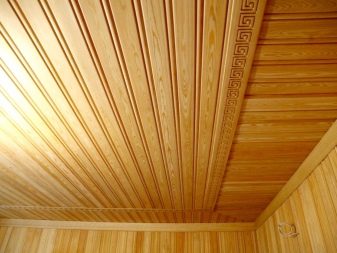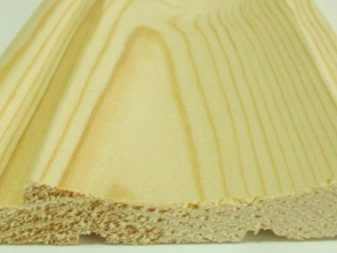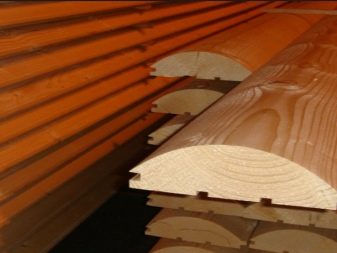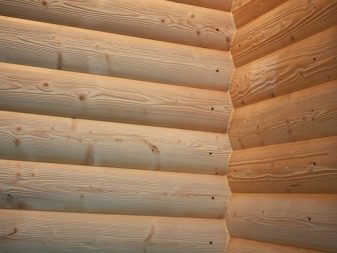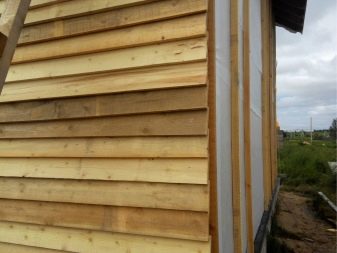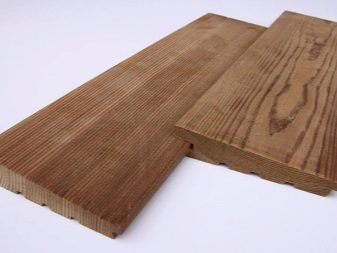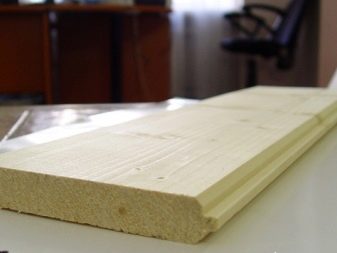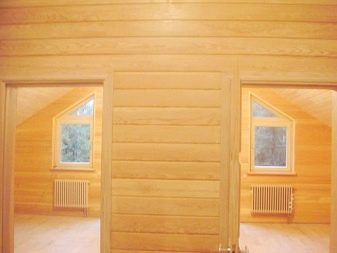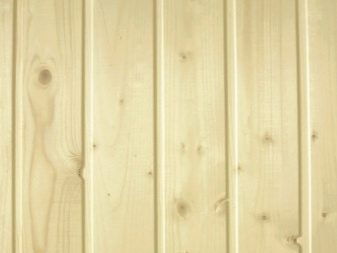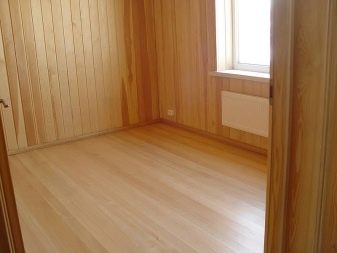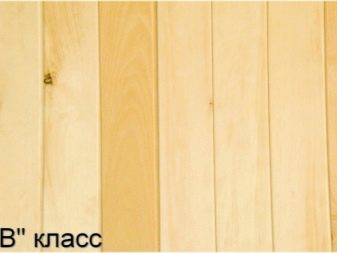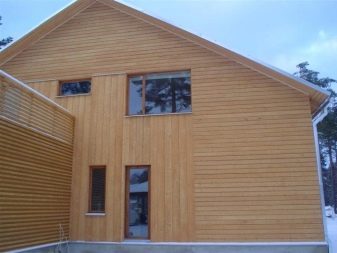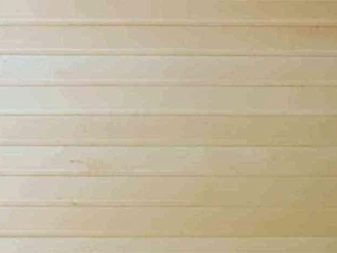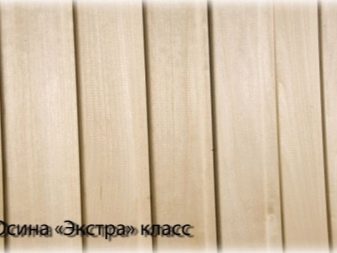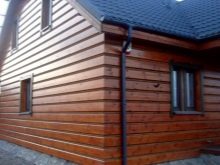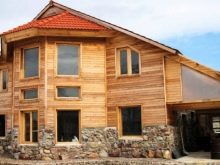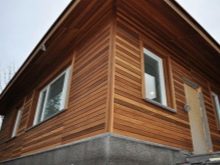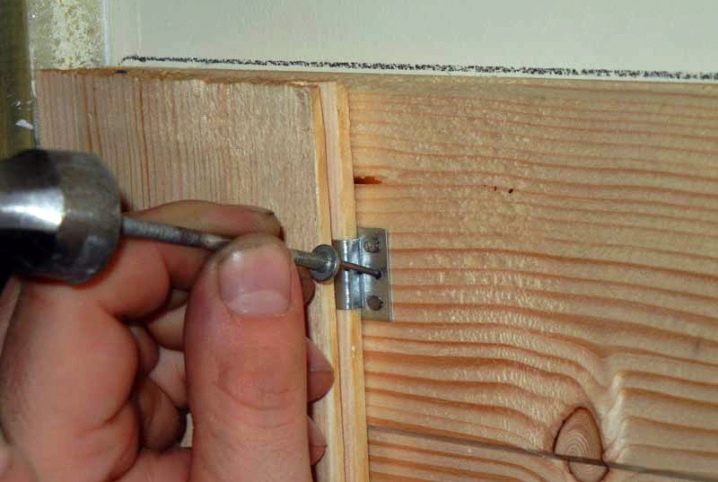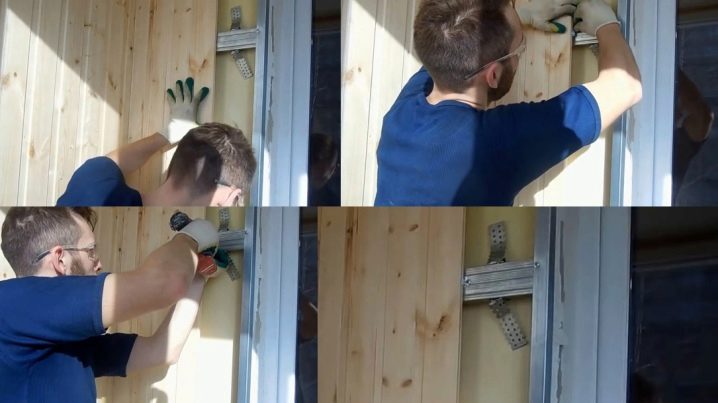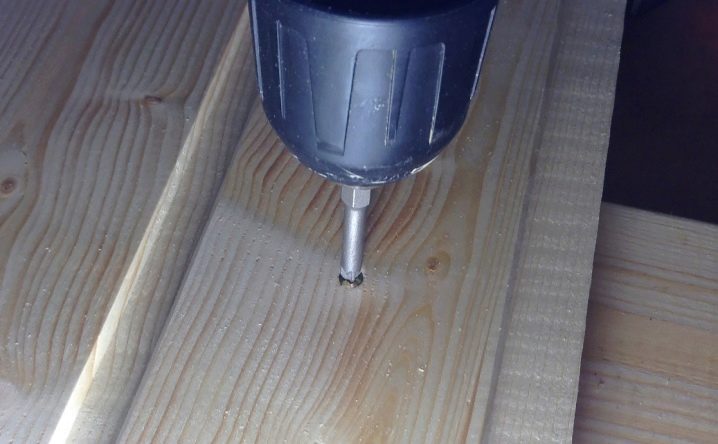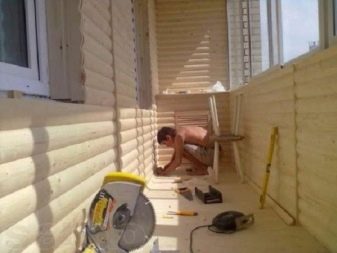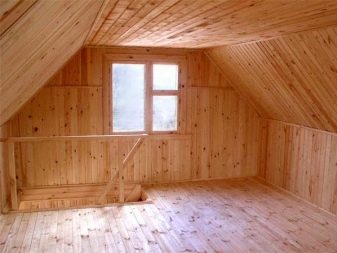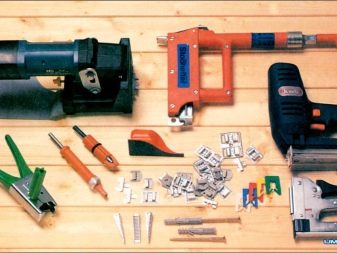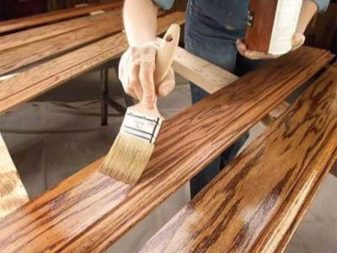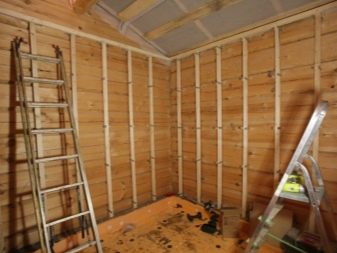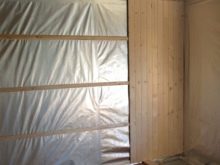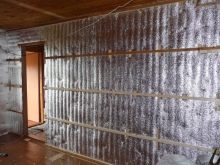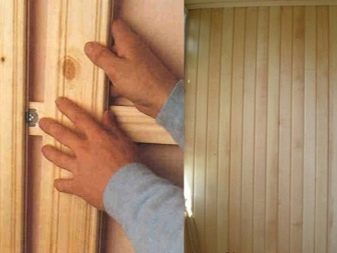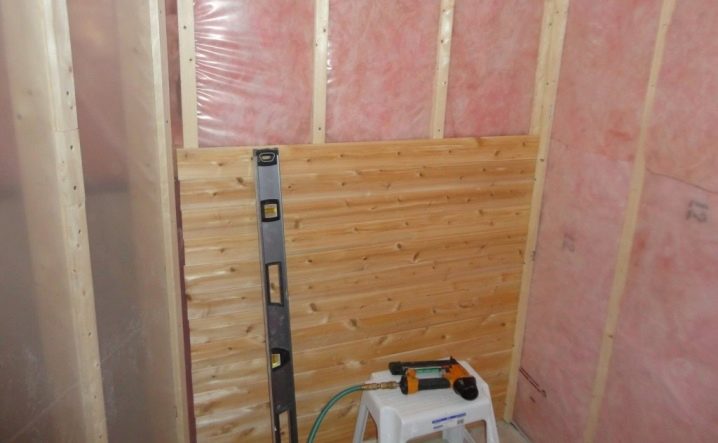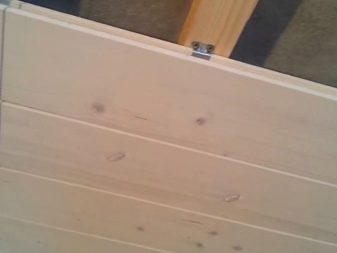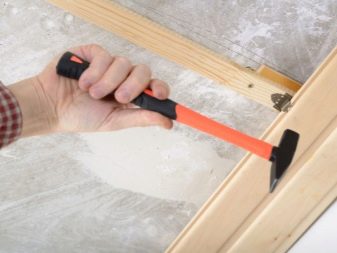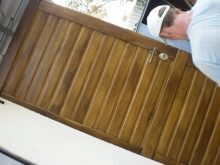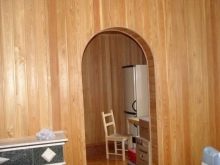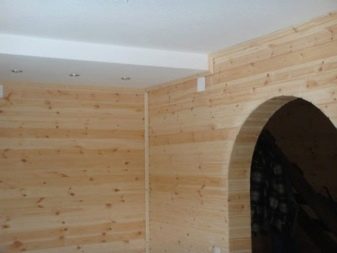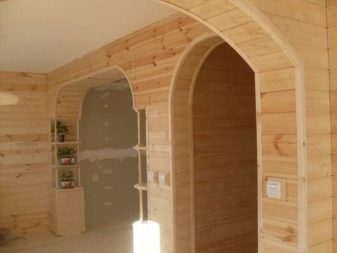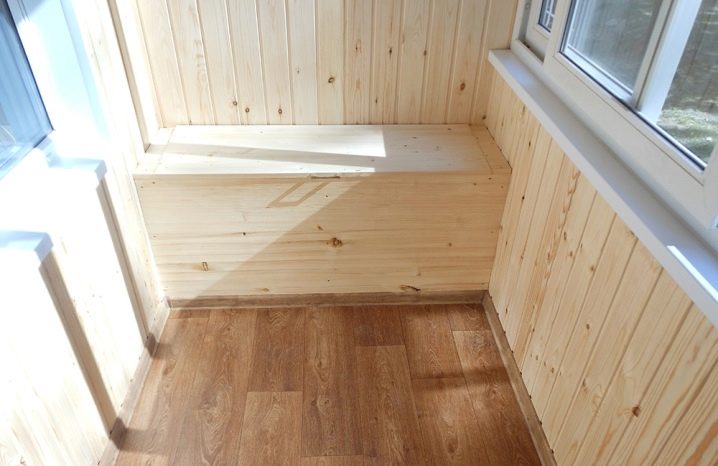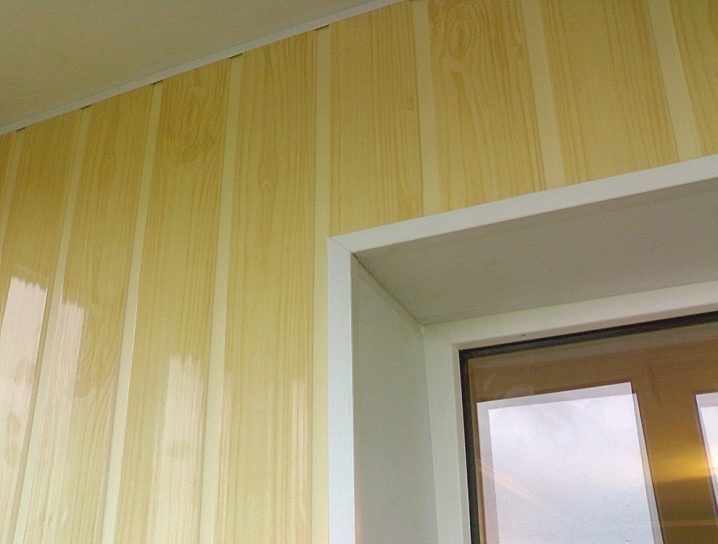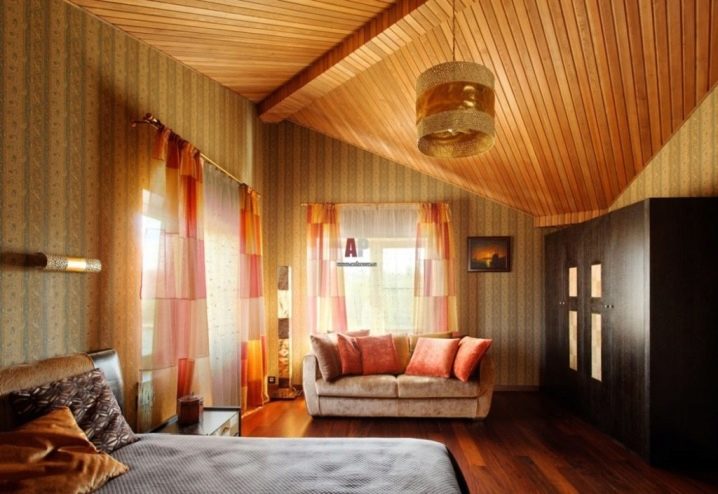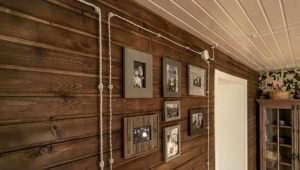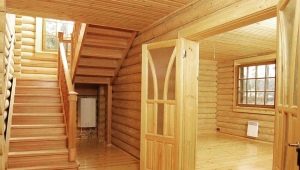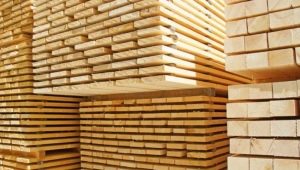How to fasten the clapboard: technology performance
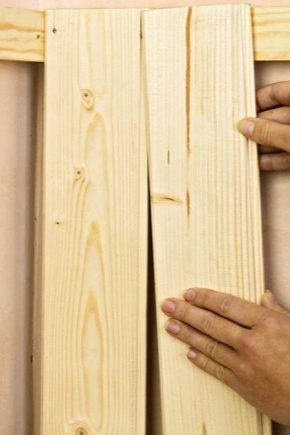
Molded - universal material. With its help, you can finish a house or apartment by attaching it to the ceiling, external and external walls, and studding it with doors. Installation of the wall panel will not take a lot of time and will not require special knowledge, so the newbie will be able to fulfill it.
Special features
By itself, the lining fixture does not cause any particular difficulties. It is easy to fix, especially if you have experience in the construction industry.
Speaking about the merits of this material, you can bring the most important of them.
- Environmental friendliness. Lining is made by special technology. From whatever material it is made, you can be sure that the lamellae will not release harmful substances.They are absolutely safe for humans, animals and the environment.
- Aesthetic appeal. Visually, the wall paneling is rated as stylish and solid. It gives any room comfort. Depending on the method of installation using clapboard, you can expand the room or increase the height of the ceilings in it.
- Ease of installation. This is one of those properties that attract every owner who decides to make the trim or interior decoration of the house with his own hands.
- Strength. Lining tolerates mechanical impact, without fear of shock and friction. It is not so easy to scratch, and in which case you can quickly remove the flaw, just polishing it and covering the area with varnish.
- Ease of care. The paneling is easy to clean. In addition, it is practically not subject to pollution.
This material has one drawback - the high cost. High-quality lining is expensive, and low-quality material is not worth buying.
Kinds
Today there are a large number of different types of lining. Classify it by material, cross section and classes. All these parameters are equally important, as they affect the appearance of the wall panel, its performance characteristics, as well as the ability to mount it inside or outside the house.
By production material
One of the fundamental classifications is the separation of the materials from which the lining is made. Thus, the material determines the appearance, scope and cost. It is worth noting that there is both a budget lining, and expensive, made of solid solid wood.
Based on financial opportunities, the style of the house and where the clapboard will be finished, and you have to choose its look.
Plastic
Plastic lining refers to the budget and is often used in the decoration of village or country houses, which do not live permanently.
The material has many advantages:
- suitable for walls and ceilings;
- it can be fastened so that the seams will not;
- a wide range of colors;
- low weight
The advantages can be added and a relatively low price.
Unfortunately, the disadvantages of this species are much more than advantages.
- Short life PVC clapboard is easy to deform, bend and break. Therefore, it is recommended to use it only for interior decoration.
- Poor UV resistance. Being in direct sunlight, plastic lining quickly fade and turn yellow, which negatively affects its appearance.
- Poor tolerates cold.In the cold PVC, the wall paneling is covered with cracks, into which dust is subsequently clogged.
If you use a plastic model only for interior decoration, all these shortcomings disappear.
Metallic
The material for lining of this type is aluminum. The result is durable, lightweight and inexpensive samples. Color of aluminum lining can be any. Often it is applied to a coating that imitates wood.
Unfortunately, metal lining is easy to spoil during transportation and installation: it easily bends and deforms, and it will not be possible to straighten it back. In addition, it can not be scratched. Aluminum profiles are coated with a special compound that prevents corrosion. If it is damaged, the rust will not slow down to appear.
Usually, metal clapboard is used for facing works, since it looks a little rough inside the house. In addition, it is not recommended to use on the ceiling. When installing, you must strictly observe the technology so as not to damage the lamella, otherwise the lamella will eventually corrode and will have to be changed.
Wooden
This species is the most popular and popular.This is not surprising, because wooden lining looks status and impressive. In addition, it helps most to create a feeling of home comfort.
This species has the largest range of applications. It can be used for cladding and decoration, attached to the ceiling or walls. Many fear that wood will quickly become infected with parasites or mold, but this is not so: even at the plant it is impregnated with special means that protect natural material from such threats.
If we talk about the shortcomings of wooden clapboard, then there are only two.
- Exposure to climatic influences. Temperature drops, pressure and humidity can cause the lining is deformed, lose their attractive appearance.
- The need for care. To avoid damage to the panel, you need to monitor its cleanliness, the absence of cracks, and also take care to negate all the negative climatic effects.
Wooden lining is made from wood of the following breeds:
- oak;
- Linden;
- aspen;
- alder;
- ash;
- cedar;
- larch;
- Pine;
- spruce.
By cross section
On this basis, there are also several types of lining.
"Standard"
This type of lining is equipped with the standard system "thorn-groove". In order to prevent deformation in the event of the wood drying up, the spike is made slightly shorter than the groove. After all the installation work is completed, the lining is laid butt, and the surface is smooth. Keep in mind that between the slats there should be no gaps.
The advantages of this type include good heat and sound insulation properties. The presence of compensatory gaps makes it possible to install it in rooms with high humidity, therefore, the lining of this type is often chosen for baths and saunas.
"Calm"
Other names "calm" -wagon - Russian, simple, "collective farmer". It is popular for its neat appearance. It cannot be said that the “calm” wall paneling is very different from the previous version. The difference is only in the beveled corners of the slats. So, if when laying the “standard” lining a flat wall is obtained without gaps, then in the case of “calm” there are beautiful concave lines all over the wall.
Good heat and sound insulation functions are stored here.. In addition, for the production of a model of this type only high quality wood is taken, so it looks more attractive than the “standard” variant.
Euro lining
This type differs from the others in that it has the best ventilation properties. This is achieved through larger spikes and grooves. Such properties are important in the event that eurolining is used for facade cladding. Therefore, the masters recommend choosing this option for facing works.
The possibilities of interior decoration using this sample are also not limited: it can be mounted on walls or ceiling. However, keep in mind that eurolining is one of the most expensive types among others, therefore it is recommended to use it only for the facade, and for interior work it is easier to choose the option.
Softline
The name of this model comes from the English “soft line”, which is what characterizes its appearance. It has rounded edges that look noble and fit well in some interiors. She found her buyer precisely because of this feature.
As for performance, they are not much different from the qualities of other species. Softline provides good sound and thermal insulation. It is mainly suitable for interior decoration, as it doesn’t look so attractive as an exterior lining. Well suited for finishing ceiling spaces.
Landhouse
Lining "Landhouse" differs from all others in that it has a beautiful figured surface. At the same time the inner surface is flat. A wide variety of shaped surfaces is available. In the photo below you can see only some of them.
"Landhouse" is used mainly for interior decoration, and they do not only wall cladding, but also the ceiling. Combining lamellae with various patterns, it is possible to achieve an interesting effect and create a unique atmosphere in the interior. Especially unusual such solutions look in baths and saunas, making them look like a steam room in the spa.
"Block house"
Blockhouse wall paneling is one of the best solutions when it comes to finishing the facade. By its appearance, it is an imitation of a rounded log. The "blockhouse" is not supplied with individual lamellae, but with whole slabs.
There are options of plastic, metal and wood, while metal and wooden paneling are almost always stylized as wood. Unfortunately, one of the most important drawbacks of the “blockhouse” is poor permeability. Simply put, the material does not "breathe." Therefore, it is imperative to make ventilation gaps.
If they are done incorrectly, water may seep under the wall paneling and eventually lead to mold or destruction of the walls of the house.
"American"
Lining of this type accurately imitates siding panels, but made of natural wood. The panel has an unusual bevelled shape, so that the "American" fit like a lap.
In most cases, "American" sheathed facades, having it horizontally. So water flows down from the walls - it turns out a sort of self-cleaning function. However, in the case of wooden clapboard, everything is not so rosy, because the effect of moisture is not very useful for it.
Since most often the “American” paneling is used for exterior plating, it is treated in a special way in order to multiply increase the resistance of the tree to parasites and diseases. The ordinary varnish and wax, which is used to process the slats after grinding and impregnation, helps against weather conditions.
Double sided
This variety is so named because the slats do not have the reverse side - both sides are facial. This is convenient, because you can not care about the correct location of the slats.Also, there is always the opportunity to choose a more beautiful side, placing a knotty pattern from the rear.
The disadvantage of this type is the installation restriction. So, double-sided wall paneling should not be placed in rooms with high humidity, because it does not have compensation gaps. Here both the spike and the groove have the same length, therefore, when expanding, the tree is irreversibly deformed.
It is recommended to use this variety in closed spaces with a flat microclimate: bedrooms, nurseries, living rooms.
According to the class of wood
Class A
First class lining is great for wall cladding and ceilings in rooms. There are no falling out knots on it, there are hardly noticeable non-through cracks and resinous streaks. Lamellae of the same color, they have a beautiful pattern.
In general, class A lining can also be used for facade work, but it is expensive, so it is not always reasonable, considering how much material is required for the exterior cladding. Sometimes such lining is used for placement of accents, highlighting any one wall or part of it. This approach allows you to save money, while fastening technology does not change.
Class b
Class B paneling looks less attractive than first-class samples. This is due to the fact that darkening and cracks occur twice as often. Captive knots and pitch pockets are also possible, and therefore such a wall paneling looks untidy.
Despite the fact that, in general, everything is not so bad, the second category wall paneling is not recommended for use in home decoration. But it is perfect for technical rooms, such as a waiting room or a veranda. Also, it can be used to make a beautiful facade cladding. The cost of class B lining is on average 180 rubles per cubic meter.
Class C
This lining belongs to the worst class. On it you can find all the flaws that exist. These are drop-down knots, and pitch pockets, and through cracks, and color heterogeneity, and unattractive woody drawing. Such lining is rarely used in construction, preferring better options.
Nevertheless, many will appreciate the low cost of this material, which partially redeems external shortcomings. The quality of service of this class is not worse than the others, it is inferior only in aesthetic terms.Lining the third class can only be found in such types as "standard" and "spire".
Class "Extra"
This lining belongs to the premium class. There are no knots, pitch pockets and cracks on the boards. All lamellas are even, of the same color. This type is best suited for decoration of residential premises, as it looks respectable, expensive and neat. In the process of operation, there are no problems either: the paneling is varnished, so it is only necessary to wash the dust from it from time to time. Since such panels are the rarest, their price is much higher than class A.
After reviewing the lining types in more detail, you will know what difficulties you may encounter during installation, as well as which of the options and when it is better to use.
Which rooms to use?
Finishing clapboard is used everywhere, but most often it is chosen for decoration of the following rooms and rooms:
- bedroom;
- balcony;
- living room;
- terrace;
- veranda;
- bath;
- kitchen;
- attic
Excellent lining looks and on the facade, which can be seen in the following examples:
Choice of fasteners
It is important not only to choose the wall panel, but also to decide how you will fasten it.Consider a few popular types of fasteners.
Klymery
Metal klyaymery (you can also find markers) can be purchased at any hardware store. Fasteners with their help is considered the most difficult, but at the same time the most accurate. Nails or screws are completely hidden clapboard. Due to the fact that they are not visible, the panel does not look like a fence, but looks like a solid slab. From the side it seems that the slats are planted on glue.
It is important to choose the right nail size. It is necessary that its cap be slightly wider than the holes in the Klymer, but at the same time it should not bulge too much, otherwise it will not work to fix the panels.
Staples
To fix the wall with brackets, you need to use a special mounting gun. In working with him, you need skill, so first practice on an unnecessary plank. Correctly attach the clapboard with staples the first time few people get.
Screws
Decorative screws are often used by beginners, as they are easier to use than a mounting gun and cleaver. They do not violate the overall visual concept, because they are not strongly striking.In general, this option is more preferable than fastening to screws, precisely because of the aesthetic appeal.
Self tapping screws
One of the easiest ways to fix the wall paneling on the ceiling and on the walls. The nuance is that the screws need to be twisted diagonally, so that they capture the spike in the groove. It is difficult to further drown the hat so that the surface of the wall panel is smooth.
In this method, nails are used along with self-tapping screws. Try to fix first and with the help of that, and with the help of another, and then decide what is easier for you.
Calculation of the amount of material
Calculate the amount of lining is not so difficult. If for some reason you decided not to use special calculator programs, you can do all the calculations yourself.
For example, take a small room, the length of the walls is 2 m and 3 m, and the height is 2.7 m.
Next, you need to calculate the number of required values.
- Square walls. For this, alternately, each of the lengths is multiplied by the height: 2 * 2.7 = 5.4 square meters. m. and 3 * 2.7 = 8.1 square meters. m
- Total area. In order to sum up the values obtained and multiply by 2 (for the walls in room 4): 8.1 + 5.4 = 13.5 sq. M. m
- The area of door and window openings.Suppose that the room has a window of 1x1 m and a door of 0.7x2 m. Then their areas will be equal to 1 square meter. and 1.4 square meters. m. respectively.
- The area covered by clapboard. This area without openings: 13.5-1-1.4 = 11.1 square meters. m
- Square slats. Dimensions vary, but for example, take 96x2700 mm. We translate into meters - 0.096х2.7 m. The area of the lamella is 0.2592 square meters. m
- The number of slats. Now the area covered by clapboard is divided by the area of the lamella: 11.1 / 0.2592 = 42.8. Rounding up, we get 43 lamellas. You should also lay 10% on the marriage.
Instruments
To fix the lining will need some tools.
All the listed equipment, as a rule, is already available to the owner, and there is nothing expensive to acquire.
- Laser level, which is needed to determine how smoothly you fix the wall paneling. Also fit the mounting level or spirit level. Vertical alignment will require a plumb.
- Electric jigsaw or hacksaw are designed for sawing the parts of the battens and the wall panel itself.
- Depending on how you fix the paneling, you will need a hammer (if the fastener is on nails or clamps), a screwdriver (when mounted on self-tapping screws), an electric stapler or a pistol with brackets (if you plan to fix it on brackets).
- Punch and drill for holes in the base.Depending on what the walls are made of (stone or wood), choose the appropriate tool.
Mounting methods
Lining can be fastened in two main ways: vertical and horizontal. The preparatory work for both methods will be almost identical.
Preparatory work
First, you need to prepare the wall paneling, if this was not done at the factory. Treat it with an antiseptic, paint or stain. Dry the material thoroughly.
Sheathing clapboard is always carried out on the batten, which is made of slats, the fastening step between them is 50 cm.
After making the crate, you need to install insulation. Insulation is placed on the waterproofing material. So you need to sheathe the room around the perimeter, and only then engage in insulation. Sheathe better plastic wrap.
Above you need to nail the final crate, which will be nailed lining. The crate must be placed perpendicular to the future wall paneling.
Vertical
The vertical method of laying lining is used quite often. Crate is done horizontally around the perimeter of the room.Further, the lining is attached from the right far corner, laying from right to left.
Horizontal
With the horizontal mounting method, the lathing is done vertically. In the future, lining nailed horizontally. The result is a log wall effect. This method of fastening is especially common if block-block lining is chosen.
Useful recommendations
If the methods of attaching the lining itself do not present any particular difficulties, then the implementation of fasteners is quite another matter.
Regarding this, professionals have a number of tips.
- Mount on klyaymery looks most neat. If possible, try to master this method, equally well suited for vertical and horizontal layout.
- Be sure to check which of the front sides of the wall panel looks better, and place them at eye level and above. As a result, the room will look more attractive.
Pay attention to the visual component. If you lay the wall paneling horizontally, the room will become wider, in the case of a vertical arrangement, it will be visually higher.
- To make the door trim, do not have to do anything supernatural.Wooden corners are made on top of the frame, then the paneling is made. The final stage is the slopes.
- The most difficult thing to frame clapboard arch. In this case, it is necessary to position one of the lamellae across the opening, and then alternately install the lamella on either one side or the other. Then the result will look neat, and the docking will add the least problems.
Installing lining your own hands - the task is simple, but you should not start it in the winter. This is due to the fact that a tree, lying on the street, is deformed and deteriorates.
Finish examples
The clapboard trim always looks beautiful and interesting, and the examples below only prove it.
- Decorate the arch will be much easier if you choose the lining with convenient locks. Ideal for this fit lining. Its easiest to dock.
- The balcony, sheathed clapboard, looks neat and comfortable. But you should not choose this method of finishing for unglazed versions, because the wall panel will quickly lose its original appearance: the tree will deteriorate, wither and deform.
- With limited finance, the plastic version can become a real lifesaver: at a relatively low price, it looks like it is not much inferior to real wood samples, and it is much easier to fix it.
- Fully covering the room with clapboard, you can achieve not only rustic style, but also ethnic, if you choose the right furniture and accented interior items. This finishing method sets off the overall atmosphere well.
It is recommended to look at the wall paneling, if you are the owner of a complex ceiling. As a rule, on such it looks best.
On the clapboard wall decoration, see the following video.
